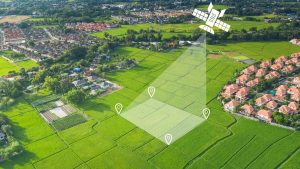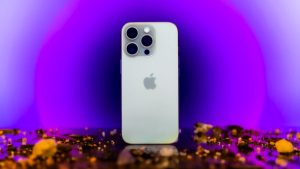🤖 What Is an AI Scientist? The Future of Discovery, Explained
Artificial Intelligence continues to redefine what’s possible in the world of science. But a new concept—known as the AI Scientist—is pushing boundaries even further. It’s not just a futuristic buzzword or a glorified neural net. Instead, it’s an evolving collection of intelligent tools that could help scientists explore, hypothesize, and even innovate faster than ever before.
Let’s explore what the AI Scientist is, how it works, and why it could be one of the most transformative developments in scientific research.
🧬 What Exactly Is an AI Scientist?
Contrary to what the name might suggest, the AI Scientist isn’t a single machine or a standalone neural network. Rather, it’s a composite system—an ensemble of advanced algorithms and machine learning models designed to support and accelerate scientific discovery.
🌐 Think of It as a Multitasking Scientific Assistant – It will help us all !
The AI Scientist doesn’t “think” or “create” independently like a human scientist. Instead, it excels at:
-
Parsing massive amounts of scientific literature
-
Identifying trends and patterns in complex datasets
-
Supporting hypothesis generation
-
Assisting in experiment design
-
Performing large-scale simulations
-
Analyzing results across varied data formats (text, images, numbers, even video)
So far, the research group behind this innovation has developed specialized algorithms for specific scientific challenges—like forecasting weather, analyzing climate change contributors, and exploring cause-effect links in public health.
🧠 Building the Foundation Model for Science
The end goal is to develop a flexible AI foundation model capable of tackling multiple scientific domains at once. Think GPT for science, but with integrated multi-modal capabilities.
📊 Multimodal Data Handling ( Great Improvement )
Unlike traditional AI tools that focus on just one kind of input (e.g., text), the AI Scientist is being trained to work with:
-
Numerical data from lab instruments
-
Research articles and papers
-
Satellite imagery
-
Biological video footage
-
Audio recordings and more
This makes it versatile across disciplines—from environmental science and epidemiology to physics and biochemistry.
🧪 What Can the AI Scientist Do in Practice? Real world solutions?
According to its developers, the AI Scientist will soon be able to assist in nearly every phase of the scientific process:
1. Literature Review
Large Language Models (LLMs) can now scan, read, and summarize thousands of peer-reviewed studies within minutes—a task that could take a human weeks.
2. Hypothesis Generation
By identifying unexplored data relationships, AI can suggest potential new areas for inquiry or experimentation.
3. Experimental Design
AI can simulate conditions, optimize variables, and recommend the most effective experimental setups—saving both time and resources.
4. Data Analysis
Once an experiment is conducted, AI can help crunch numbers, visualize trends, and point out anomalies.
❗ Limitation: While AI is a powerful assistant, it still lacks scientific judgment and contextual reasoning—areas where experienced researchers remain irreplaceable.
🎯 What Is the Ultimate Goal?
The creators emphasize that the AI Scientist is not meant to replace human researchers. Instead, it serves as a tool to offload repetitive or data-intensive tasks, enabling scientists to focus on the creative and conceptual aspects of their work.
👨🔬 Humans Remain at the Core
Tasks like:
-
Formulating original ideas
-
Interpreting ambiguous results
-
Thinking critically about causality
-
Making ethical and strategic decisions
…still require the uniquely human traits of insight, intuition, and creativity.
🔍 Real-World Use Cases Already Underway
The early prototypes of the AI Scientist have already proven their value in domains such as:
-
Climate Research: Identifying causal relationships between pollution sources and rising temperatures.
-
Public Health: Exploring the effectiveness of vaccination policies in curbing disease transmission.
-
Meteorology: Enhancing accuracy in long-range weather forecasting.
Each of these tasks involves massive data sets and complex interactions, areas where AI thrives.
📈 Why This Matters: Dealing with the Data Deluge
In today’s world, scientific knowledge is growing exponentially. Thousands of research papers are published daily, and experiments generate petabytes of data. No human can process it all.
The AI Scientist acts as a filter and processor, converting overwhelming information into actionable insights.
📅 When Will We See Full Deployment?
A functional, fully-trained AI Scientist model isn’t quite ready for public release—but the developers suggest we could see a more refined version within a couple of years. The focus now is on:
-
Improving model intelligence
-
Expanding dataset diversity
-
Ensuring accuracy and scientific integrity
💬 Expert Take: Will AI Replace Scientists?
Absolutely not. In fact, one of the researchers behind the project stated:
“Rest assured, the goal is not to replace human scientists. I don’t envision—nor would I ever want to see—a machine substituting for, or interfering with, human creativity.”
The AI Scientist is envisioned as a collaborative partner, not a competitor.
❓ FAQs
1. Is the AI Scientist a single neural network?
No, it’s a composite system made up of various algorithms and models designed for multitasking across scientific disciplines.
2. Can AI conduct experiments on its own?
Not yet. It can assist with design and analysis but cannot execute complex experiments without human supervision.
3. Is this tool already in use?
Early prototypes have been applied to areas like climate modeling, epidemiology, and weather forecasting.
4. Will AI replace human scientists?
No. It’s intended to complement human expertise, not replace it.
5. When will the full AI Scientist model be released?
A comprehensive version is expected within the next couple of years, pending further development and testing.




